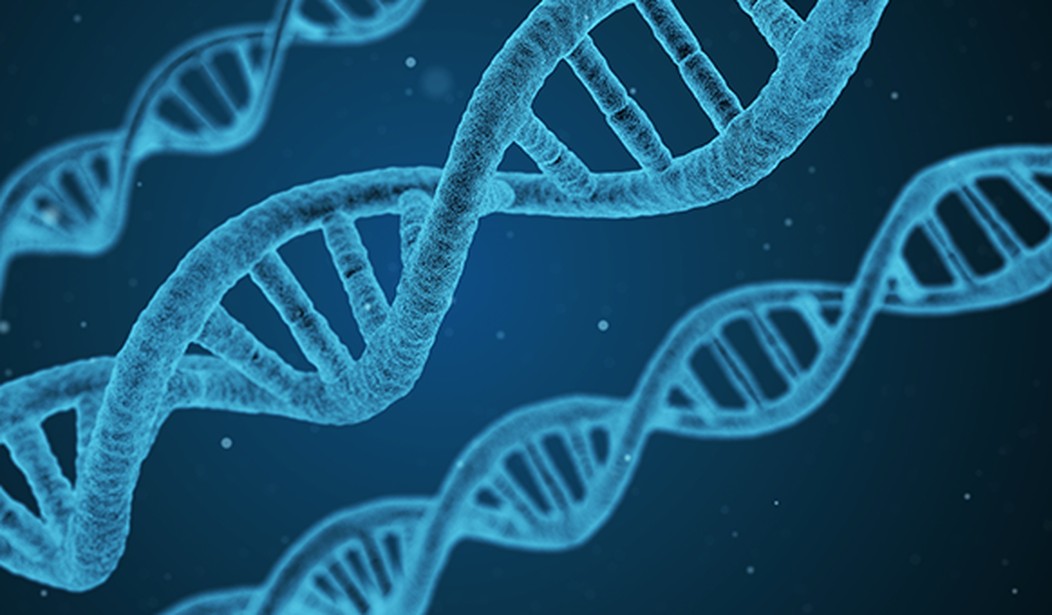We are all of us, human beings, members of the species Homo sapiens. We are, all of us, mammals. We are, all of us, as humans, as mammals, creatures who exhibit sexual bipolarity. There are two sexes, male and female. If you have an X and a Y chromosome, you are male. If you have two X chromosomes, you are female. There are rare and unusual genetic abnormalities, usually consisting of a polyploidy (more than the usual pair of chromosomes) of the X and Y chromosomes; XXY, XYY, and so forth, but these are extremely rare. These differences are determined at conception, and male and female humans develop very differently.
These are facts. Anyone awake for 5th-grade health class already knows this. Here's the fun part about biology: We're always learning new things, and those new things seem to keep reinforcing our understanding of human sexual bipolarity. One recent report indicates that even men's and women's brains are different, and those differences are determined genetically.
Differences between men and women in intelligence and behaviour have been proposed and disputed for decades.
Now, a growing body of scientific evidence shows hundreds of genes act differently in the brains of biologically male or female humans. What this means isn’t yet clear, though some of the genes may be linked to sex-biased brain disorders such as Alheizmer’s and Parkinson’s diseases.
These sex differences between male and female brains are established early in development, so they may have a role in shaping brain development. And they are found not only in humans but also in other primates, implying they are ancient.
Now, we're going to be getting down in some genetic weeds here, talking about not only DNA but also messenger RNA, or mRNA (the natural kind, not the injected kind), and transcriptomes. Turns out that these differences in brain development are determined by how specific genes act.
When scientists compared the transcriptomes in postmortem tissue samples from hundreds of men and women in 2017, they found surprisingly different patterns of gene activity. A third of our 20,000 genes were expressed more in one sex than the other in one or several tissues.
The strongest sex differences were in the testes and other reproductive tissues, but, surprisingly, most other tissues also showed sex biases. For instance, a subsequent paper showed very different RNA profiles in muscle samples from men and women, which correspond to sex differences in muscle physiology.
A study of brain transcriptomes published earlier this year revealed 610 genes more active in male brains, and 316 more active in female brains.
To make a long story short, men's and women's brains develop differently. That's a gross oversimplification, but it will do for the sake of this discussion.
We have discussed such sexual differences many times in these virtual pages. Mostly, we have talked about the physical differences, in speed, strength, and stamina, inherent in the sexes, because of the current stupidity concerning allowing men to cosplay as women to compete in women's sports. These differences, too, are facts and exist from conception.
Read More: Glamour's Women of the Year Are... Men? Really?
UK Nurses Object to a Man in Their Changing Room - and Now Face Misconduct Probe
Now, scientists are still working to understand precisely how these differences manifest themselves in brain development, and to do that, they are studying these genetic factors behind brain development, as well as the development of other areas of the body:
It would be remarkable if sex differences in the activity of so many genes were not reflected in some major differences in brain function between men and women. But we don’t know to what extent, or which functions.
Some patterns are emerging. Many female-biased genes have been found to encode neuron-associated processes, whereas male-biased genes are more often related to traits such as membranes and nuclear structures.
Many genes are sex-biased only in particular sub-regions of the brain, which suggests they have a sex-specific function only in those regions.
However, differences in RNA levels don’t always produce differences in proteins. Cells can compensate to maintain protein balance, meaning that not all RNA differences have functional outcomes. Sometimes, developmental processes differ between sexes but lead to the same end result.
That's science. That's how you do science. You look at what happens, physically, in a body, and you work out why. The "why" is the key, but the "what" always seems to come back to human, mammalian sexual bipolarity, with key physical differences, mentally and physically.
Biology isn't like a lot of the other disciplines. There aren't many sharp edges. Biology is fuzzy, and not just with fur-bearing mammals. There are adaptations and exaptations, genetic oddities, behavioral things in some species (us) that are hard to explain. Even in matters of sex, across the realm of vertebrates, things aren't always black and white; some amphibians can change sex under some environmental circumstances, and some reptiles, especially the Squamata (lizards and snakes), can reproduce by parthenogenesis, where females can lay fertile eggs without any contact with a male. But of what sharp edges there are, mammal sexual bipolarity is as sharp an edge as you'll find.
So, our journey of discovery continues, and we always seem to come back to that one inescapable fact: Men are men, and women, women. Vive la difference!














